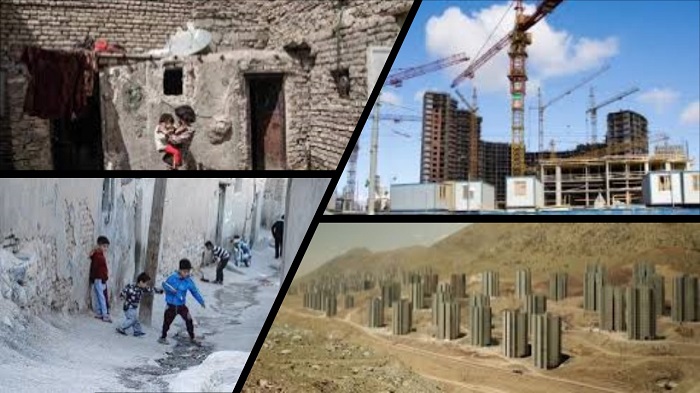

As if COVID-19 is not enough Iranians are simultaneously facing inflated prices, poverty, earthquake risks, and high unemployment. The housing crisis is directly related to regime mismanagement.
Mehdi Soltan-Mohammadi, who is a key expert on Iran’s housing dilemma has said all the pressures of recent months have hit renters hard. He is suggesting that the normal 12-month contract should be extended to between 3 and 5 years. House rents he said are dependent on house prices and the later has been facing constant increases. The price of a square meter has reached at least $590.
Key points about the housing crisis
The problem for families finding suitable homes has become far more serious since the start of summer and the whole issue of the spread of COVID-19 has made matters worse.
More than 42,100 people have died of the novel #coronavirus in 318 cities checkered across all of #Iran‘s 31 provinces, according to the Iranian opposition PMOI/MEK. pic.twitter.com/SKLsJoVGHx
— People’s Mojahedin Organization of Iran (PMOI/MEK) (@Mojahedineng) May 16, 2020
It has been reported recently by Iran’s statistics center that rental prices in Tehran are now 27 to 32% more than last year. Unfortunately when suitable rental properties are no longer in reach of the average family it forces them to occupy slum areas in the city.
Tehran house renters are not the only ones suffering as in Isfahan province many workers have begun to prepare houses in adjacent cities. In Baharestan city, in the south of the province rents have increased by at least 50%.
Renters living in the slums face losing their jobs as well as their homes as they have to travel several kilometers from the slum dwelling to the workplace. If the rent is increased further then they will not be able to afford to get to work.
House prices have increased in price over five decades.
There has been a problem with the inflation of house prices for several decades but in recent years it has become far worse as the rural-urban drift has accelerated. To begin with, there was plenty of space in the cities to fulfill this trend, and living in a city wasn’t as popular as it is now. House prices and rents were fair in those early days of rural-urban drift. It was the 60s that saw change happening were more jobs in the industrial sectors and service industries were available thus encouraging villagers to seek out these new openings.
Unfortunately, due to the lack of urban planning pressure was put on limited available land leading to high inflation on house, land, and rental properties. Many migrants had to resort to living in unplanned slums
Figures released by the Statistics Center state that one square meter of housing in Tehran and other key cities was now $590. In Tehran’s middle-class areas this is equivalent to paying $29,500 for a 50-meter square apartment.
#Iranian regime’s recent decision to artificially alter the country’s exchange rate and argued that this action would result in increasing poverty and rising social unrest.https://t.co/hyLX2OODg0#Iran #MEK #COVIDー19 #coronavirus @USAdarFarsi pic.twitter.com/NGhSgR4tYZ
— MEK Iran (Mujahedin-e Khalq) (@MEK_Iran) May 13, 2020
50 percent of Iranians have to pay rents for properties
The largest number of renters are living in the following cities:
- Kohkiluyeh and Boyer-Ahmad,
- Sistan and Baluchestan,
- Tehran,
- North Khorasan,
- Kermanshah,
- Qom, and Alborz.
Inflation Makes Life Worse for all Iranian Renters
Overall renters think that the government should control rental prices. However other experts in housing believe that inflation should be controlled so that prices don’t rise. Mehdi Soltan-Mohammadi believes that if inflation and the rise in the price of houses were controlled then the landlord would not need to increase rents. The problem at the moment is that the current inflation rate stands at more than 30% so to help solve this run away rise in prices the government should reduce the growth of liquidity and be more d with the budget.
Overall, the housing market and prices are as a result of inflation, a macroeconomic indicator. Rental prices will stay the same because the government not long ago erased four zeros from the national currency to rescue the economy. At the same time it has increased prices of necessary products such as bread, eggs, and fuel which affect all other prices.
Dilemma for urban dwellers
It has been suggested that city residents should leave the cities to reside in slums in the countryside to help to eliminate their problems of rising house and rent prices. The problem is for the people they live in fear following the crimes committed by the regime against slum dwellers who were the masterminds of the November 2019 and January 2020 riots. These occurred in several areas including amongst others:
- Quds district;
- Shahryar;
- Malard in the suburb of Tehran;
- Maali-abad in the suburb of Shiraz;
- Karaj province;
- Khuzestan province;
- Sfahan province;
- Markazi provinces.
So one crisis follows another in Iran but the housing crisis is one that angers the people more than anything else.
For several months now, the Iranian regime has been watching the Coronavirus outbreak spread further and further across the country. It failed to deal with the situation in a timely and adequate manner, with serious measures long overdue. It has also failed to report the extent of the outbreak, leaving its opposition – the People’s Mojahedin Organization of Iran (PMOI / MEK Iran) – with the task of conveying the seriousness of the health crisis.







